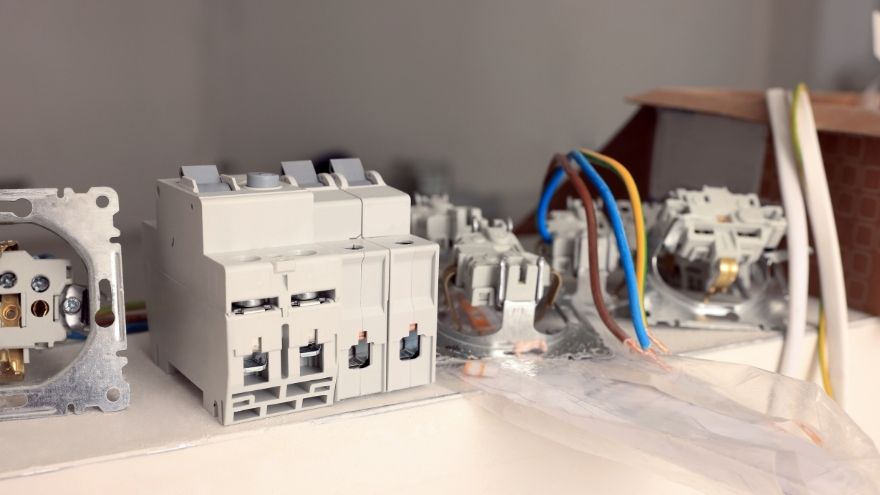Proper power regulation for electrical devices is an extremely important factor influencing the efficiency of energy management. In order for everything to run smoothly, pulse width modulation, known as PWM (Pulse Width Modulation), should be used. PWM allows for precise adjustment of the level of power supplied to receivers. This has a positive effect on their operation, while reducing energy consumption. In the rest of the article, we will discuss what exactly the term PWM is, how it is used in electrical installations, and what advantages PWM systems have in electrical circuits.

Check out the electrical equipment at the Onninen wholesaler
What is the term PWM?
 PWM is Pulse Width Modulation, a very important technique used in electronics to regulate the power that is supplied to various devices. The most important task of PWM is to change the width of pulses in a square signal, thanks to which it is possible to control the average values of voltage or power. In practice, this means that the device does not have to be constantly supplied with a constant voltage, but instead receives fast pulses - turned on and off at a specific rhythm.
PWM is Pulse Width Modulation, a very important technique used in electronics to regulate the power that is supplied to various devices. The most important task of PWM is to change the width of pulses in a square signal, thanks to which it is possible to control the average values of voltage or power. In practice, this means that the device does not have to be constantly supplied with a constant voltage, but instead receives fast pulses - turned on and off at a specific rhythm.
The frequency and the proportion of on to off, the so-called duty cycle, determine how much power a device receives in a given time. For example, if a PWM signal has a 50% duty cycle, it means that the device is powered half the time, resulting in an average voltage equal to half the supply voltage.
The PWM regulator is widely used in many areas - from regulating LEDs, through speed control of electric motors, power regulation of photovoltaic panels, to precise power management in audio systems. It is no coincidence that PWM regulators are so often used, ensuring more sustainable and economical use of electricity.
Using PWM in electrical installations
Where electrical or modular equipment dominates, there is no room for poorly matched solutions, which is why the selection of the regulator is so important. Especially since the use of PWM in electrical installations is so versatile, finding application in various applications.
 It is very popular for adjusting the brightness of LED lighting. Thanks to this regulator, you can smoothly adjust the light intensity, which has a positive effect on the comfort of use, as well as energy savings. An installation designed in this way is able to provide a wide range of brightness. This is of particular importance in intelligent lighting systems.
It is very popular for adjusting the brightness of LED lighting. Thanks to this regulator, you can smoothly adjust the light intensity, which has a positive effect on the comfort of use, as well as energy savings. An installation designed in this way is able to provide a wide range of brightness. This is of particular importance in intelligent lighting systems.
The PWM regulator is also widely used in photovoltaic installations, playing a key role in some elements of the system, such as the charge regulator. They control the flow of energy from the solar panels to the battery, which allows for efficient charging. This technology ensures that the battery voltage and energy stored in it are optimally used. The PWM regulator sets the appropriate power and charging current, which helps in better energy management, positively affecting the efficiency of the entire system. A solar regulator works on a similar principle.
Advantages of PWM systems in electrical circuits
 PWM systems in electrical circuits, such as installation cables, offer many advantages, contributing to greater efficiency and functionality of devices. They allow precise control of power and current intensity, which is especially crucial in applications requiring variable intensity. Thanks to PWM, it is possible to adjust the average value of power and voltage that is delivered to the load. This leads to savings and reduced heat losses.
PWM systems in electrical circuits, such as installation cables, offer many advantages, contributing to greater efficiency and functionality of devices. They allow precise control of power and current intensity, which is especially crucial in applications requiring variable intensity. Thanks to PWM, it is possible to adjust the average value of power and voltage that is delivered to the load. This leads to savings and reduced heat losses.
Another huge advantage is the ease of implementing PWM systems in microcontrollers and digital systems. PWM also minimizes electromagnetic interference, which is determined by short pulses. So even if the generation of interference is large, PWM regulators limit it, which is extremely beneficial for the stability of the devices.
Moreover, PWM systems increase the life of components, as their operation limits overheating, reducing the risk of damage from excessive voltage. In audio applications, volume is precisely controlled without sound distortion.
Check out the electrical equipment at the Onninen wholesaler